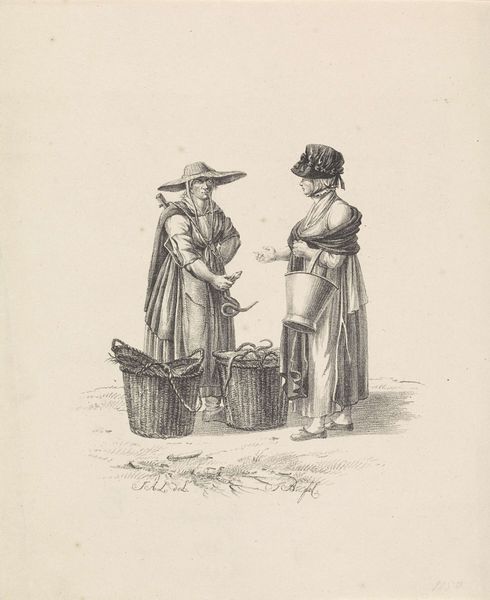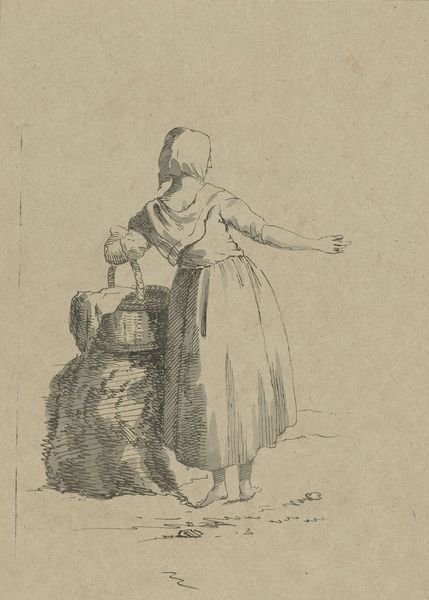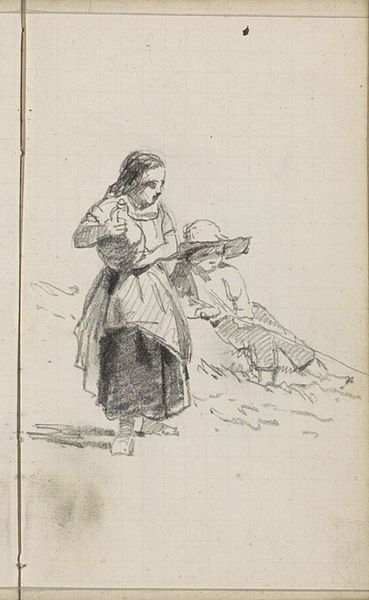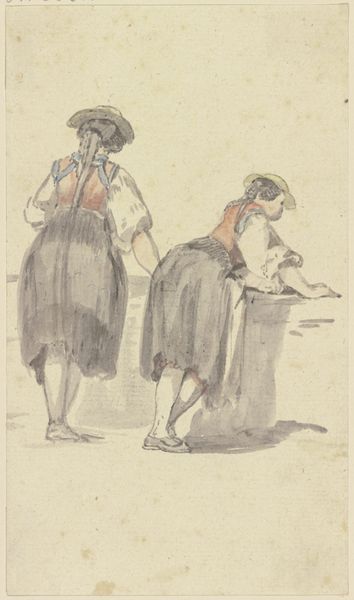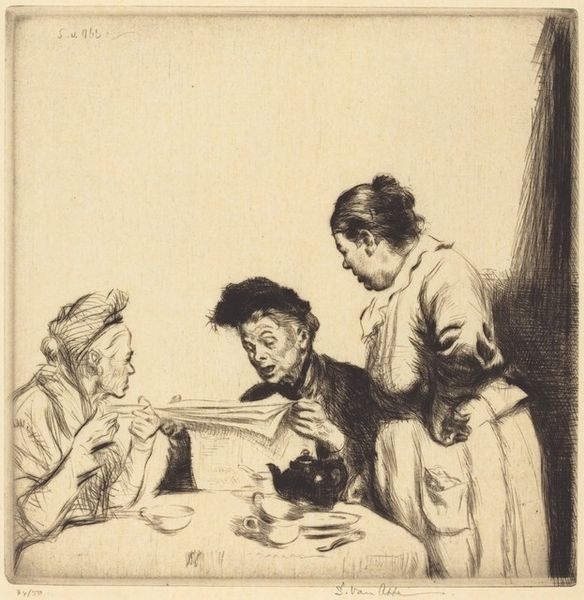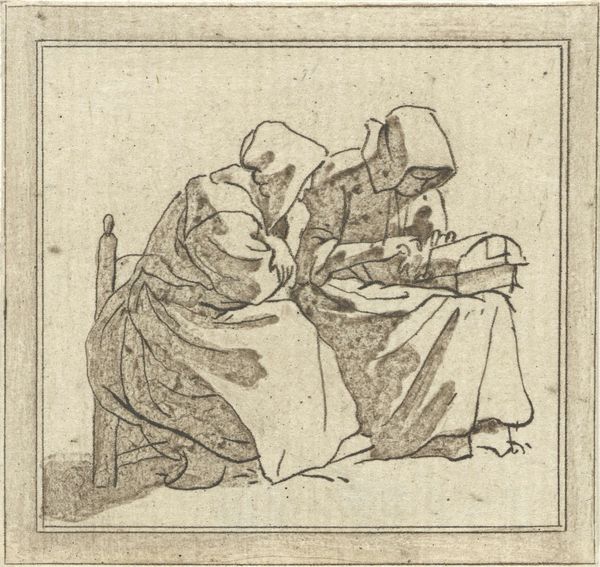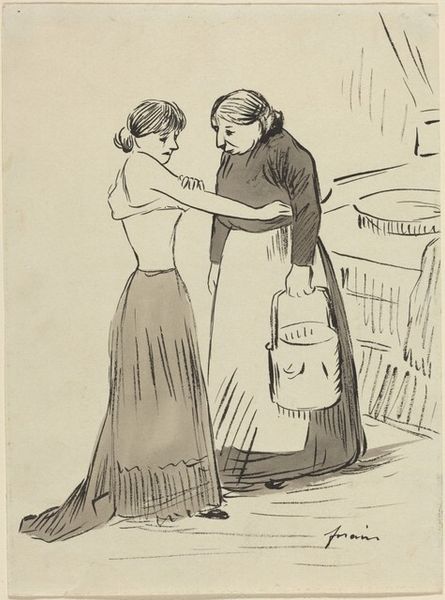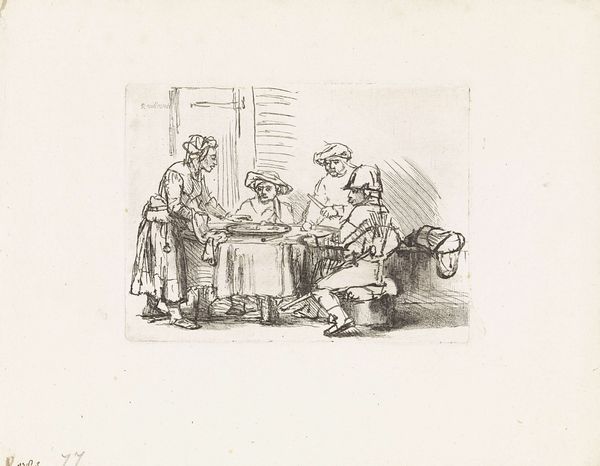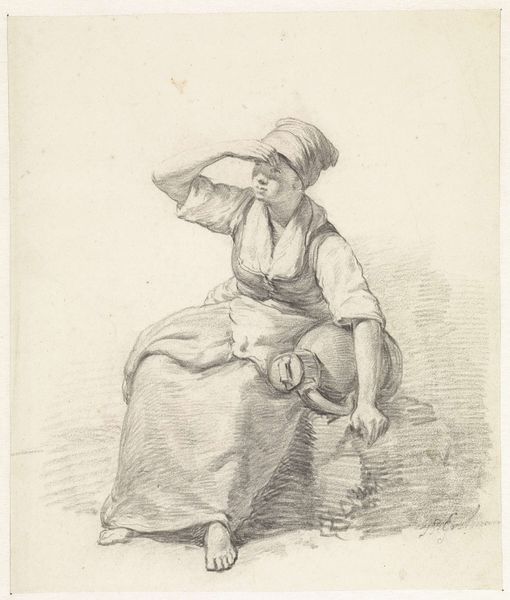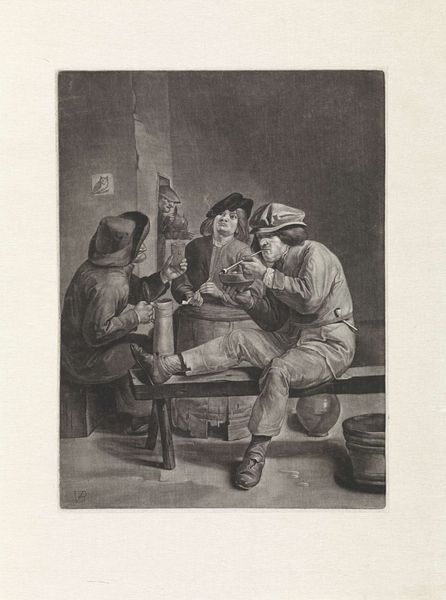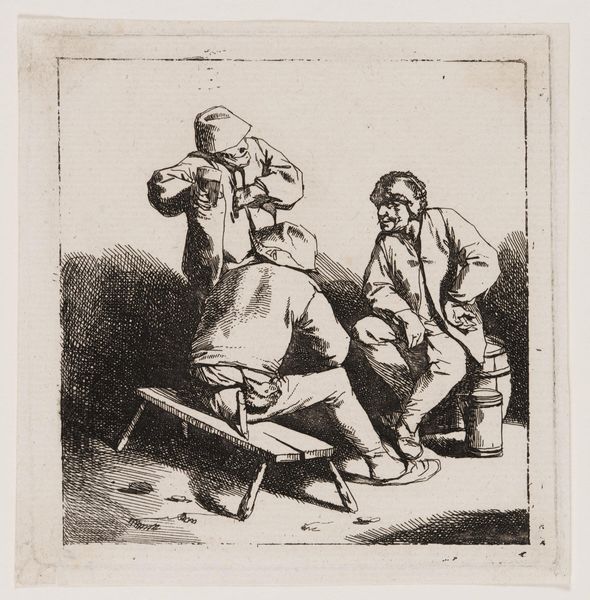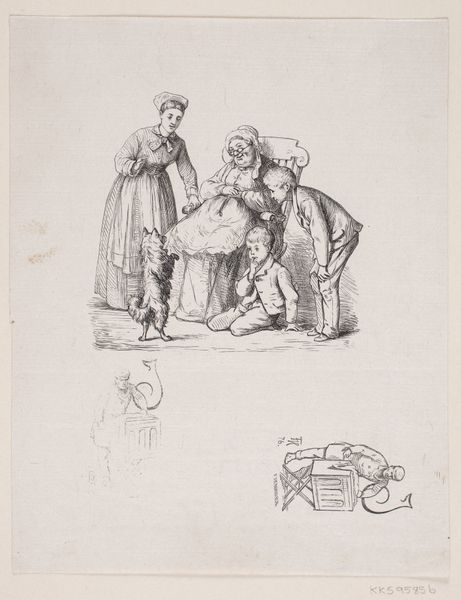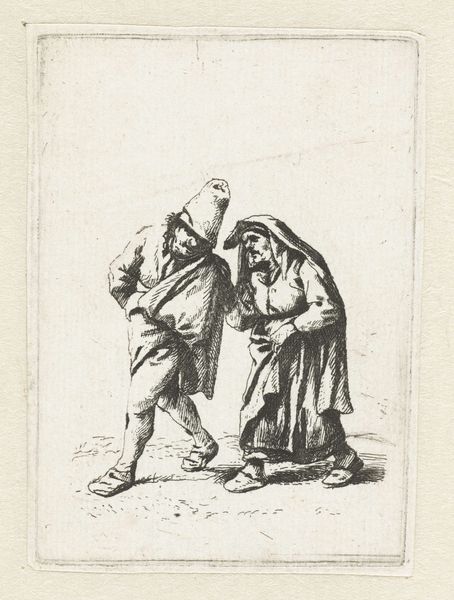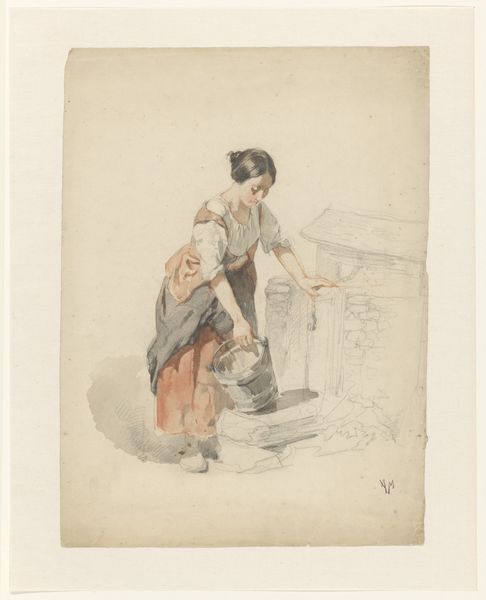
drawing, paper, pencil
#
portrait
#
drawing
#
pencil sketch
#
paper
#
pencil
#
sketchbook drawing
#
pencil work
#
genre-painting
#
realism
Dimensions: height 180 mm, width 130 mm
Copyright: Rijks Museum: Open Domain
Curator: Welcome, everyone. Let’s take a closer look at "Standing Woman and a Kneeling Woman," a drawing rendered in pencil on paper, dating from 1869 to 1941, by Johannes Abraham Mondt. Editor: There’s an immediate sense of weariness here. The quick strokes give it a transient, sketchbook quality. It feels more like a captured moment than a carefully constructed portrait. Curator: Indeed. The formal economy of the lines directs our attention to the women’s posture, revealing their internal states through external form. Observe the hatching and cross-hatching, the manipulation of light and shadow—minimal yet expressive. Editor: For me, the staff the standing woman leans on speaks volumes. It’s not just support; it’s a symbol of her resilience, her experience, the burdens she carries. And the basket near the seated figure suggests sustenance, shared resources within the community. Curator: That's a fine reading. Consider the composition: The standing figure dominates the space, yet the seated one anchors the composition. There’s a dynamic tension, a carefully considered use of positive and negative space that amplifies the subjects' emotional weight. Editor: It resonates with historical notions of women's roles: one standing tall in a position of strength, perhaps providing, while the other, more subdued, remains tethered to the earth, nurturing. It's a duality of labor and resilience I often see portrayed across various cultures and eras. Curator: And what do we infer from that contrast of verticality and horizontality in their stances? It speaks, perhaps, to differing states of being—activity versus repose, dominance versus submission. These women occupy distinct structural positions within the visual plane and, by implication, society. Editor: Perhaps. Or could it simply indicate life stages? An older woman imparting knowledge to someone at a more dependent phase of her life? It echoes recurring motifs of matriarchal knowledge passed down through generations. Curator: Interesting thought. It reveals how this interplay shapes our interpretation, doesn't it? Editor: Absolutely, and reveals the artist's understanding of social archetypes. A profound piece, rendered with deceptive simplicity. Curator: Indeed. Thank you for that perspective.
Comments
No comments
Be the first to comment and join the conversation on the ultimate creative platform.
